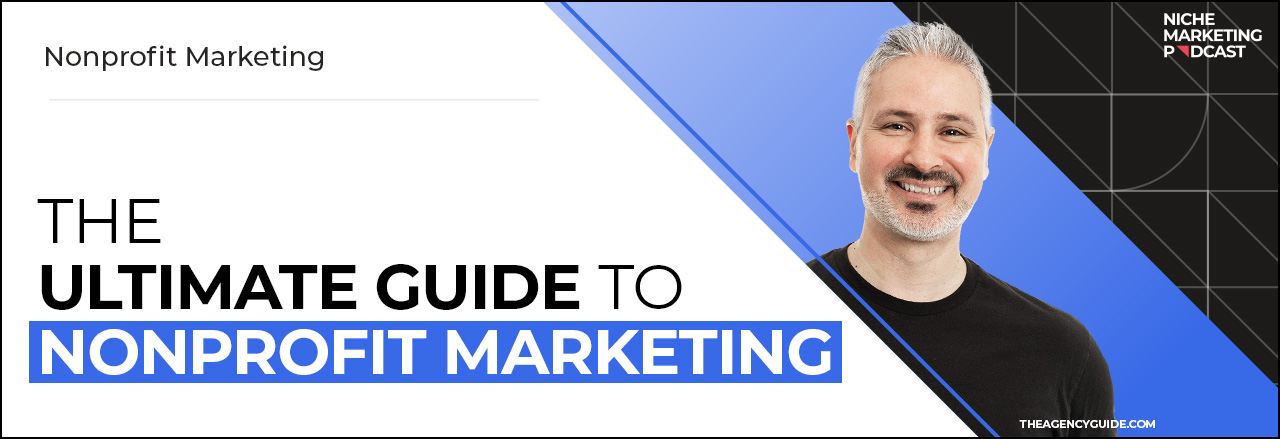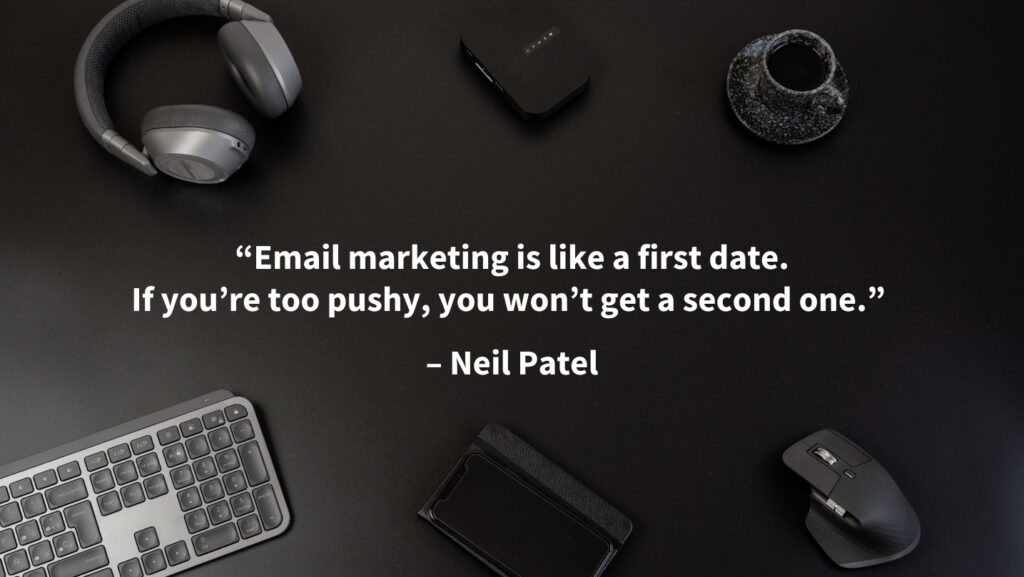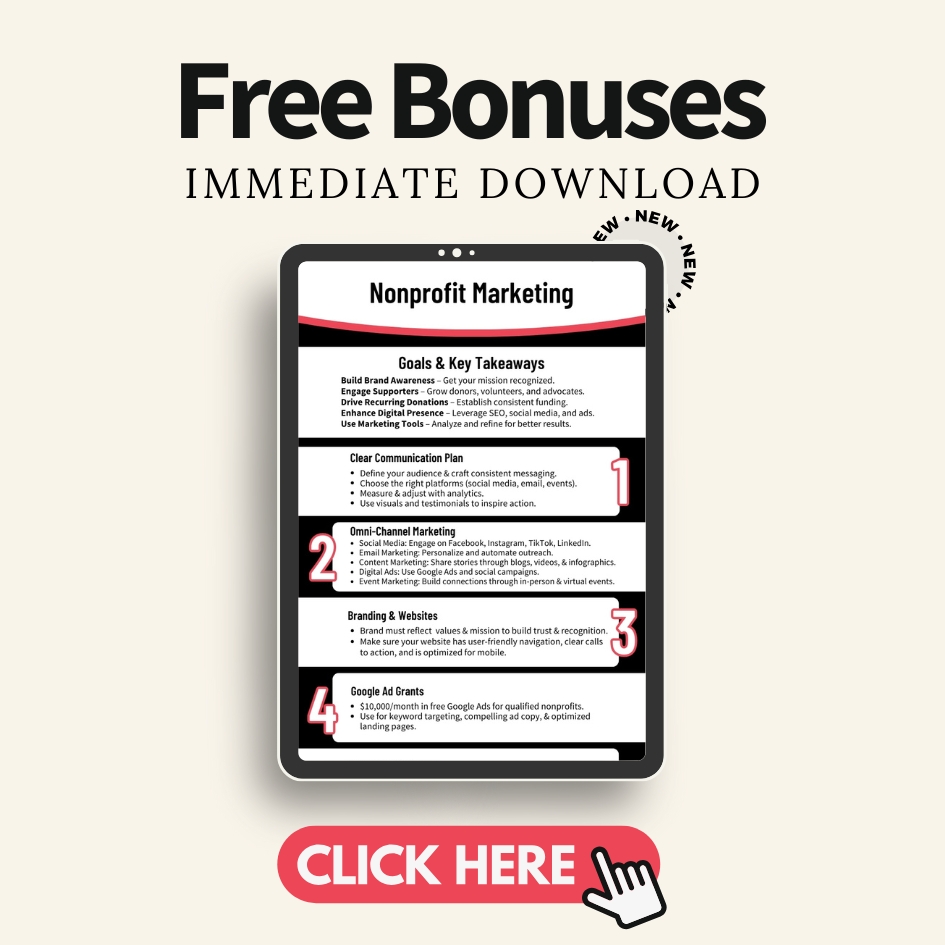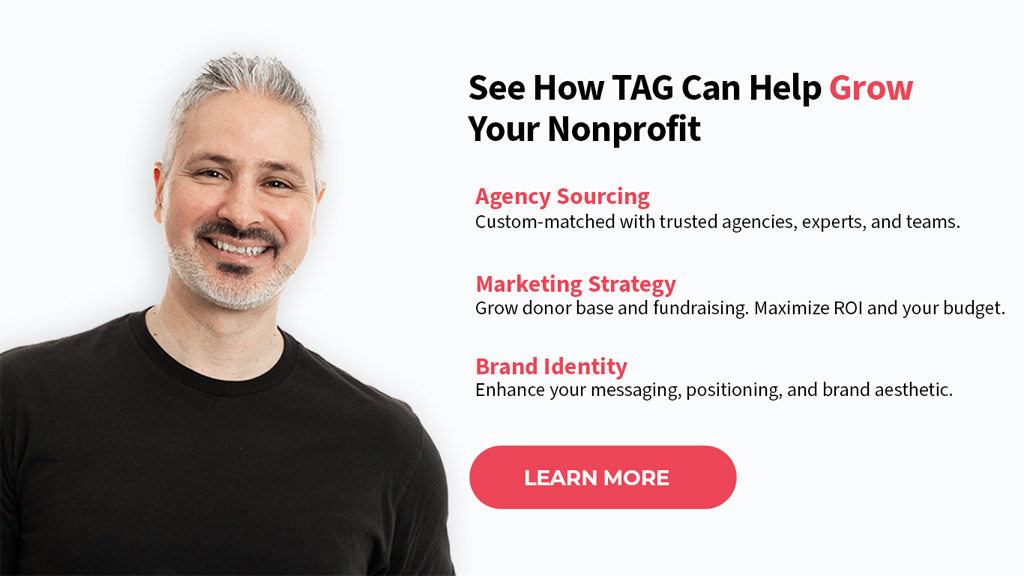
In today's competitive landscape, with over 2 million nonprofit organizations in the US alone (according to Statista), effective marketing is crucial. To stand out, acquire new donors, and raise awareness for your mission, your organization needs a robust nonprofit marketing strategy.
This comprehensive nonprofit marketing guide will help you elevate your nonprofit’s marketing efforts and make a real impact.
Introduction to Nonprofit Marketing
Nonprofit marketing is more than just promotion; it’s about building lasting connections with those who support your mission. To succeed, your nonprofit organization must excel across multiple levels—from outreach and storytelling to nurturing long-term relationships.
Marketing Goals for Nonprofits
1. Building Brand Awareness:
Expand recognition of your nonprofit's mission and impact.
2. Engaging Potential Supporters:
Build a loyal base of donors, volunteers, and advocates.
3. Driving Recurring Donations:
Establish sustainable funding through consistent contributions.
4. Enhancing Digital Presence:
Improve visibility through digital marketing strategies like SEO, video marketing, and social media marketing.
5. Incorporating Marketing Tools:
Leverage advanced marketing software and analytics to refine strategies and measure impact.
Effective outreach and communication strategies are essential to promote your nonprofit’s mission, engage potential supporters, and drive recurring donations.
A well-crafted nonprofit marketing plan builds relationships, fosters emotional connections, and optimizes resources for maximum impact.
Why a Strategic Approach Matters
Without a clear strategy, reaching those who care about your cause is a challenge. A well-thought-out approach amplifies your mission, helps you achieve your goals, and fosters long-lasting relationships. It's your roadmap for getting noticed.
A custom nonprofit marketing campaign not only boosts your message but also drives action, making it vital for nonprofit success—especially when every resource counts.
With a solid strategy in mind, it's time to dive deeper into the resources that can guide your nonprofit's success.
How We Enhanced This Nonprofit Guide
As an agency search firm with pros on staff, we at TAG know marketing. But, to make this guide the most comprehensive resource for nonprofits, we spoke with eight nonprofit marketing experts and included their best advice throughout the article, too.
For more detailed insights, you can find the full-length interviews linked here:
- Nonprofit Communications Strategy [Part 1]
- Omnichannel Marketing for Nonprofits [Part 2]
- Keys to Branding & Websites for Nonprofits [Part 3]
- Google Ad Grants for Nonprofits [Part 4]
- Influencer Marketing for Nonprofits [Part 5]
- Search Engine Optimization for Nonprofits [Part 6]
- Videos & Storytelling for Nonprofits [Part 7]
- How to Grow a Thriving YouTube Channel for Nonprofits [Part 8]
Ready for more in this ultimate guide to marketing a charitable or philanthropic organization with a mission? Keep reading!
Our Resource Guide Promise
By the end of this guide, you'll have enough knowledge to make informed, strategic decisions regarding how to market your nonprofit.
Want More Nonprofit Marketing Help?
If you want bespoke advice, reach out to us at TAG. We matchmake companies pro bono from our pool of vetted marketing agency partners to help you achieve all your marketing and business goals faster.
Finding the right nonprofit marketing agency can revolutionize your marketing effort.

1. Communications Strategy for Nonprofits
A strong communications strategy helps nonprofit organizations effectively convey their mission and engage stakeholders. It involves identifying key messages, audiences, and the best channels to reach them.
The Power of Storytelling
Storytelling is the heart of nonprofit marketing. Sharing authentic and impactful stories is a cornerstone of effective marketing efforts. Use real-life examples, emotional narratives, and visuals to showcase your organization’s mission and successes.
When done well, storytelling shows supporters their impact, drives donation efforts, and boosts social media engagement.
Key Elements of an Effective Communication Strategy
1. Define Your Audience: Understand who your supporters are and what motivates them. This will help you tailor your message.
2. Segment: Target segments or sub-groups of your audience with the right content if you work on audience targeting and segmentation (especially around volunteers and donors) as Rick Cohen and I discuss about six and a half minutes into our conversation. This will boost your social media engagement too.
3. Craft Your Core Messages: Ensure clarity and consistency across all marketing efforts. Create marketing material that speaks to the heart of your audience.
4. Choose the Right Marketing Channels: Leverage social media, email marketing, and events to reach your audience.
5. Measure and Adjust: Use analytics tools to track performance and refine strategies.
A clear communication strategy lays the foundation for successful marketing efforts. So let's dive deeper into specifics!

2. Nonprofit Omnichannel Marketing
Omnichannel marketing ensures your message is cohesive and consistent across all platforms—social media, email, events, and more—wherever your audience is engaged. Effective omnichannel marketing integrates both inbound marketing elements (like content marketing and SEO) and outbound marketing tactics (like email outreach and digital ads) to strengthen your nonprofit's connection with potential supporters.
Key Marketing Channels
Here are the core marketing channels every nonprofit should consider when crafting their omnichannel strategy:
1. Social Media Platform Mix: Facebook, Instagram, TikTok, X (or Twitter), BlueSky, and LinkedIn help build brand awareness and engage communities through social media marketing. Choose the right mix of social platforms based on your audience and goals.
2. Email Marketing: Personalize outreach to donors and automate follow-ups.
PRO TIP:
Make sure you do not only email when you have your hand out for donations, but rather, as Michael Goodrum said when talking about email marketing for nonprofits about 29 minutes into our conversation:
"[Email marketing] really also needs to be used to build relationships with people...we want to train our donors when they see an email from us, like, oh, this could be something really exciting. I can’t wait to open this email."
3. Content Marketing: Share impactful stories through blogs, infographics, videos, and other marketing material. Host these stories on your website, YouTube, and other relevant platforms to expand their reach.
4. Event Marketing: Use in-person and virtual events to foster meaningful connections and support fundraising efforts.
5. Digital Ads: Use Google Ads, Meta ads, and other paid platforms to strategically target your audience.
A consistent omnichannel strategy strengthens branding by creating a seamless experience for all stakeholders. By meeting supporters where they are, omnichannel strategies help you build trust, boost recognition, drive engagement, increase donations, and foster long-term loyalty.
Throughout the rest of this guide, you’ll find additional strategies and tactics to help you apply these principles to each marketing channel in your nonprofit’s plan.

3. Branding & Websites for Nonprofits
Your nonprofit’s brand identity is more than just a logo—it should embody your values, mission, and the positive impact you have on your community. A cohesive and consistent brand image, including your logo, colors, messaging, website design, social profiles, and tone of voice, builds trust and recognition.
Because of this complexity and nuance, we have found that many nonprofits struggle to create a unique memorable brand that shows up with consistency.
So, let's look at some of our most helpful advice broken down.
Best Practices for Website Design
1. User-Friendly Navigation:
Your website should be intuitive, with clear navigation that allows visitors to quickly find what they need. Key sections like "About Us," "Programs," "Donate," "Volunteer," and "Contact Us" should be easy to locate.
This not only improves the user experience but also helps convert visitors into supporters.
2. Compelling, Clear Calls to Action (CTAs):
Every page on your website should include a strong call to action that guides visitors to take the next step. Whether it's donating, signing up for your newsletter, or volunteering, make sure your CTAs are clear and prominently displayed.
Use action words like "Join Us," "Get Involved," or "Support Our Mission" to make them more engaging.
3. Mobile Optimization:
More and more users are browsing the web on mobile devices, so having a mobile-friendly site is non-negotiable. A responsive website ensures that visitors have a seamless experience, whether they’re on their phone, tablet, or desktop.
This is especially important since many donors and volunteers may access your site while on-the-go.
4. Storytelling Through Design:
Your website’s design should tell a compelling story. Use images, videos, and compelling copy to showcase your nonprofit’s mission, values, and impact. Real stories from those you serve—combined with testimonials and case studies—help create an emotional connection that encourages action.
5. SEO-Friendly Content:
Implementing search engine optimization (SEO) best practices ensures your nonprofit is discoverable online. Use targeted keywords related to your cause, such as "youth mentoring programs" or "animal rescue organizations."
This will help your website rank higher on search engines, making it easier for potential supporters to find you.
6. Security and Trust Signals:
Donors want to know that their contributions are safe. Ensure your website has a secure connection (HTTPS) and display trust badges or certifications from reputable organizations (e.g., BBB, GuideStar).
This helps foster a sense of trust and security, particularly in the donation process.
7. Donor-Friendly Features:
Simplify the donation process. Use easy-to-find donation buttons, offer multiple payment methods (credit card, PayPal, etc.), and make the process as simple as possible.
You can also offer recurring donation options for those who want to contribute regularly.
8. Engagement Through Blogging:
Adding a blog section to your website is a great way to keep supporters updated on news, events, and impact stories. Blogging also helps with SEO, increases your site’s visibility, and gives you more opportunities to connect with your audience.
9. Accessibility:
Make sure your website is accessible to all individuals, including those with disabilities. Use alt text for images, ensure compatibility with screen readers, and design with high contrast to support those with visual impairments.
Peer-to-Peer Fundraising as a Branding Tool
Peer-to-peer fundraising is a unique way to significantly enhance your nonprofit's brand awareness and engagement.
As Alex Morse, an expert in nonprofit website and brand building, notes:
"Peer-to-peer fundraising is about crowdsourcing your marketing—it's not just getting donations from one person but empowering them to share your cause with their networks."
By encouraging supporters to create personalized fundraising pages, you tap into their networks, expanding your reach and reinforcing your mission through authentic storytelling.
How Peer-to-Peer Fundraising Enhances Branding
- Storytelling: Supporters share personal stories, creating narratives that resonate with their networks and reinforce the nonprofit's mission.
- Digital Presence: Peer-to-peer campaigns often leverage social media and online platforms, increasing the nonprofit's digital footprint and visibility.
- Community Building: By engaging supporters as active advocates, nonprofits build a community that embodies their brand values and mission.
With a strong brand, optimized website, and supporters evangelizing your mission, your nonprofit is better positioned to leverage organic traffic, paid traffic, media attention, and the power of the Google Ad Grant program, which we will discuss in the next section.
![Google Ad Grants for Nonprofits [Nonprofit Marketing with Grant Hensel, Part 4] Google Ad Grants for Nonprofits with Grant Hensel](https://www.theagencyguide.com/wp-content/uploads/2024/10/Google-Ad-Grants-for-Nonprofits-Nonprofit-Marketing-with-Grant-Hensel.jpg)
4. Google Ad Grant Program for Nonprofits
Imagine getting $10,000 every month in free advertising spend to use for your nonprofit on Google! That's the power of the Google Ad Grant Program (and Microsoft has a smaller one too). It's a game-changer for nonprofits we've helped because it allows them to boost online visibility, attract potential supporters, and drive donations.
By leveraging this strategically, eligible nonprofits can achieve key marketing goals without the financial burden of traditional paid advertising.
Eligibility and Application Process
To qualify for the Google Ad Grant, nonprofits must:
- Meet Eligibility Requirements: Hold valid charity status and comply with Google's terms of service.
- Have a High-Quality Website: Maintain a functional, content-rich website that aligns with their mission (see section #3 above).
- Maintain Compliance: Adhere to performance requirements.
The application process involves registering through Google for Nonprofits and setting up an ads account tailored to the grant program.
Best Practices for Managing and Optimizing Google Ad Grants Campaign
To maximize the impact of Google Ad Grants, nonprofits should adopt a structured strategy that balances campaign optimization with ongoing performance management.
Here’s how to align your efforts for sustained success:
1. Build a Strong Foundation
Keyword Targeting: Identify mission-aligned, high-intent keywords like “donate to wildlife conservation” or “volunteer for homeless shelters.” Prioritize terms that reflect user intent while aligning with your nonprofit’s goals. For example, environmental organizations might target “climate action opportunities” or “sustainable charity programs.”
Compelling Ad Copy: Craft concise, emotionally resonant ads with clear calls to action (e.g., “Join Our Cause Today” or “Help Fight Hunger”). Highlight urgency or impact, such as “Your $50 Provides 100 Meals,” to drive engagement.
Strategic Campaign Segmentation: Organize campaigns into focused themes like fundraising, volunteer recruitment, or awareness. For instance:
- Fundraising: Target keywords like “donate to education nonprofits.”
- Volunteer Recruitment: Use phrases like “mentor at-risk youth near me.”
- Awareness: Promote educational content (e.g., “Learn About Clean Water Initiatives”).
Landing Page Optimization: Ensure landing pages are mobile-responsive, fast-loading, and tailored to campaign goals. Include testimonials, impact metrics, and prominent CTAs (e.g., “Donate Now” buttons). For volunteer campaigns, simplify form fields to reduce friction.
2. Manage and Refine Campaigns
Performance Tracking: Monitor key metrics to gauge effectiveness:
- Click-Through Rate (CTR): Assess ad relevance (aim for ≥5% to comply with Google’s thresholds).
- Conversion Rate: Track actions like donations, newsletter sign-ups, or event registrations.
- Cost-Per-Click (CPC): Optimize bids to stay within the $2 CPC cap while maximizing reach.
A/B Testing: Experiment with ad variations to identify top performers. Test headlines (e.g., “Save Lives Today” vs. “Support Our Mission”), CTAs, or landing page layouts. Use Google’s responsive search ads to automate testing.
Bidding Optimization: Leverage Smart Bidding strategies like *Maximize Conversions* or *Target CPA* once conversion tracking is established. For newer accounts, start with *Maximize Clicks* to build data before transitioning to conversion-focused bidding.
Integration with Other Channels: Align Google Ads with email campaigns, social media, and influencer partnerships. Promote blog posts or videos across platforms to reinforce messaging. For example, retarget ad clickers via Facebook with follow-up content.
3. Ensure Compliance and Long-Term Success
Account Maintenance:
• Maintain at least two active ad groups per campaign, each with two ads.
• Use ad assets like sitelinks (“Donate Now,” “Upcoming Events”) and callouts (“Tax-Deductible,” “100% Impact Guaranteed”) to enhance visibility.
• Regularly audit campaigns to avoid policy violations (e.g., broad location targeting or inactive ads).
Conversion Tracking: Set up Google Analytics goals for donations, volunteer sign-ups, and petition signatures. Monitor these metrics to refine targeting and content.
Continuous Learning: Stay updated on Google Ad Grants policy changes and leverage tools like PING for compliance alerts. Reallocate budgets from underperforming keywords to high-converting themes.
By strategically optimizing campaigns and rigorously tracking performance, nonprofits can transform Google Ad Grants into a powerful tool for driving donations, volunteerism, and awareness.
To learn more about this topic, start with this conversation with an expert in Google Ad Grants.

5. Influencer Marketing for Nonprofits
Want to expand your reach? Don’t overlook influencer marketing! Partnering with individuals who align with your values can help amplify your message.
Collaborating with influencers is a powerful marketing tool for nonprofits to spread their message, boost brand awareness, and connect with new supporters. Influencers bring an authentic voice that truly resonates with their followers.
Key Benefits of Influencer Marketing
1. Expanded Reach: Influencers have dedicated audiences that trust their opinions, helping you access new potential supporters beyond traditional outreach methods.
2. Authentic Storytelling: Influencers share a nonprofit’s mission in a relatable way, fostering emotional connections and inspiring action.
3. Community Engagement: Influencers encourage meaningful interactions and discussions that create a sense of belonging around a cause.
4. Cost-Effective Promotion: Partnering with micro-influencers or cause-driven influencers offers an affordable way to generate meaningful impact.
Step-by-Step Guide to Influencer Marketing for Nonprofits
1. Define Clear Goals & Align KPIs
Begin by establishing specific objectives for your influencer campaign, such as increasing donations or volunteer recruitment. Break these goals into measurable targets (e.g., "$5,000 in donations via influencer links") and align them with KPIs like engagement rates, conversion rates, or website traffic.
Use tools like Google Analytics to set baseline measurements for tracking progress.
2. Identify Your Target Audience
Analyze your ideal supporters' demographics and online behavior to identify preferred platforms (e.g., Instagram for visual storytelling). Tailor messaging to resonate with each audience segment (e.g., donors vs. volunteers).
Partner with influencers who align with your mission, ensuring their audience demographics match your target supporters.
3. Find Mission-Aligned Influencers
Influencer marketing for nonprofits is about partnering with authentic advocates who can mobilize their communities. Micro-influencers (1,000–100,000 followers) often yield higher engagement due to their personal connection with followers.
For instance, the Leukemia & Lymphoma Society successfully used micro-influencers to promote their Light The Night event, achieving a significant engagement rate on Instagram.
To build successful partnerships, nonprofit marketers should seek influencers who:
- Align with Your Mission: Choose influencers passionate about similar causes.
- Engage Your Audience: Evaluate engagement rates, not just follower count.
- Create Authentic Content: Prioritize influencers who share meaningful, mission-driven content.
- Have Platform Relevance: Ensure they are active on platforms where your target audience is most engaged, such as Instagram, YouTube, or TikTok.
4. Develop a Collaborative Content Plan
Collaborate with influencers to create authentic content that reflects their style while emphasizing your nonprofit's messaging. Use diverse formats like live streams, social takeovers, or impact stories to engage audiences and allow influencers to share personal experiences that connect with your nonprofit’s mission.
Provide clear guidelines for calls-to-action (e.g., donation links) while allowing creative freedom to maintain authenticity.
5. Launch & Amplify the Campaign
Schedule content during peak engagement times and amplify it across email newsletters, blogs, and social channels. Foster real-time interaction through live Q&A sessions or user-generated content prompts.
Monitor performance using UTM parameters to track referral traffic and conversion rates from influencer links.
6. Monitor Performance & Optimize
Measure engagement metrics (likes, shares), website traffic duration, and donation conversions. Evaluate social growth through new followers and brand mentions using social listening tools.
Pro Tips for Success
- Track ROI: Compare campaign costs to revenue generated (e.g., donations, event tickets) using tools like Google Analytics.
- Use Unique Links: Assign trackable URLs to each influencer for precise attribution.
- Leverage A/B Testing: Experiment with content formats (e.g., videos vs. posts) to identify high-performing strategies.
- Audience Demographics Tools: Verify influencer audience alignment with platforms like Creator IQ.
By integrating strategic planning with data-driven measurement, nonprofits can maximize influencer partnerships, validate campaign impact, and amplify their mission effectively.
Watch our Influencer Marketing playlist on YouTube to learn more:
Building Long-Term Influencer Relationships
As one last strong piece of advice, instead of one-off campaigns, aim for sustained partnerships with influencers who are genuinely invested in your cause. Long-term collaborations strengthen relationships, ensuring consistent awareness and deeper audience connections.
By leveraging influencer marketing strategically, nonprofits can extend their reach, attract new supporters, and enhance community engagement. Integrating influencer efforts with SEO and other digital marketing strategy priorities further ensures sustained visibility and growth.
6. Search Engine Optimization
Think of Search Engine Optimization (SEO) as the key to making your website easy to find on Google. Effective SEO drives free traffic, strengthens your brand, and helps your nonprofit appear in search results. This boosts visibility and attracts potential supporters.
By optimizing your website, you can increase organic traffic, raise brand awareness, and engage with your target audience more effectively.
Key SEO Tactics for Nonprofits
Below are essential tactics tailored for nonprofits to enhance their online visibility and impact.
Keyword Research
Identify mission-aligned keywords like "nonprofit fundraising,""how to donate," or "volunteer opportunities near me" using tools like Google Keyword Planner, SEMrush, and Ahrefs. Prioritize long-tail keywords to target specific audiences, reduce competition, and attract more qualified traffic.
On-Page Optimization
Optimize website elements such as title tags, headers, and meta descriptions with relevant keywords. Create compelling content that addresses user intent while maintaining readability through concise language and clear structure. Clear formatting, bullet points, and concise language will improve readability and keep visitors engaged.
Technical SEO
Ensure mobile responsiveness and fast page speeds. Use schema markup to help search engines understand your content, and conduct regular audits to fix broken links or duplicate content issues.
Content Marketing
Publish blogs, impact stories, and educational resources to establish authority. Use emotional storytelling and multimedia elements like videos (more on this in a later section!) to drive engagement and conversions.
Local SEO
Optimize Google My Business profiles and maintain consistent NAP (Name, Address, Phone) information across directories. Encourage reviews to build credibility in local searches.
Link Building
Collaborate with partners, media outlets, and community organizations to earn backlinks. Leverage guest blogging and press releases to strengthen domain authority.
Measuring SEO Success
To evaluate the success of your nonprofit’s SEO efforts, track key performance indicators (KPIs), such as:
- Organic Traffic: Monitor how many visitors find your website through search engines.
- Keyword Rankings: Track your rankings for target keywords and adjust strategies accordingly.
- Bounce Rate: Evaluate how engaged visitors are with your content and identify areas for improvement.
- Conversion Rate: Measure the percentage of visitors taking desired actions, such as signing up for newsletters or donating.
Implementing an effective SEO strategy has enabled the nonprofits we have supported to maximize their digital presence, attract supporters, and achieve their mission-driven goals.
With a well-optimized website, your nonprofit can take the next step by leveraging video marketing and storytelling to deepen engagement and inspire action (more on this in the next section).
Want More on SEO?
If you want to dive deeper into SEO, we looked at best practices from the perspective of other niches too:
• Organic SEO and Paid Search in Industrial Marketing Mastery where we interviewed Justin Smith, Founder of OuterBox and SEO Expert
• Content Marketing Strategies for Building Trust and Authority as a Mortgage Lender where we talked with Jeff Kuns, Business Development Manager at Finance Studio, about SEO around the 19-minute mark
7. Video Marketing & Storytelling
Video marketing is a dynamic tool for nonprofits to connect with supporters and share their mission through impactful visual storytelling. It fosters emotional connections, inspires action, and drives engagement more effectively than text-based methods.
Leveraging video boosts engagement, as social media platforms prioritize video content for higher visibility and interaction. Videos are also highly shareable, amplifying awareness across platforms organically.
By blending visuals, sound, and narratives, video storytelling creates compelling and memorable experiences that resonate deeply with audiences.
Creating Nonprofit Videos
What types of video content can a nonprofit make? Let's look a few popular nonprofit video types.
| Video Type | Description |
|---|---|
| Educational or Explainer Videos | Simplify your mission and educate viewers by breaking down complex initiatives into digestible content. |
| Testimonial Videos | Highlight stories from beneficiaries, donors, or volunteers to build credibility and showcase impact. |
| Impact Stories | Use personal narratives to demonstrate tangible effects of your work, helping supporters see the value of their contributions. |
| Behind-the-Scenes Content | Offer a glimpse into your daily operations, events, or team culture to build transparency and trust. |
| Event Highlights | Capture key moments from fundraising or volunteer events to inspire future participation. |
| Call-to-Action Videos | Directly encourage viewers to donate, volunteer, or support your nonprofit in specific ways. |
Videos like the ones mentioned above are particularly effective for nonprofit organizations. Below are key steps we've identified as crucial for nonprofit clients to implement:
Steps to Creating Effective Nonprofit Videos
Many nonprofit marketers want to turn on the camera, hit record, and just GO! But remember this quote from Ted Passon, an award-winning video maker in our conversation about Video Storytelling:
"Prep is really, really, really important. and you kinda can't have too much prep time..."
1. Define Your Goals: Determine the purpose of your video—whether it's fundraising, awareness, or engagement.
2. Know Your Audience: Tailor content to resonate with your specific audience demographics and interests.
3. Craft a Compelling Storyline: Structure your video with a beginning, middle, and end, focusing on emotional storytelling.
4. Use High-Quality Visuals: Even on a budget, ensure good lighting, clear audio, and a professional appearance.
5. Optimize for Platforms: Customize video length and format for different social media platforms, such as shorter clips for Instagram and longer videos for YouTube (although YouTube shorts can do very well too!).
6. Incorporate Branding: Ensure your logo, colors, and tone are consistent across all video content.
After creating your videos, the work begins to get it out into the world so they have a chance to make an impact and spread.
Promoting Nonprofit Videos
There are many ways to promote your videos online, but most nonprofits stop short of taking advantage of all the avenues available to them. We have found that many NGOs share a video on one or two social platforms and maybe hit "boost" in Facebook. That is not enough!
Here are some other ideas to get you mapping out a promotion plan for the great videos your organization creates.
1. Social Media Campaigns: Share videos across as many social media platforms as possible to engage existing supporters and attract new ones.
Pro Tip: Change the copy slightly in the caption to make it both look different and be more relevant to each platform.
2. Email Marketing: Embed videos in newsletters to personalize communication and boost click-through rates (a topic we'll look at more in "9. Email Marketing & Automation").
3. Website Integration: Feature videos prominently on your website's homepage and key landing pages.
4. YouTube Channel Growth: Regularly update your YouTube channel with fresh content to increase visibility (as we'll talk more about in "8. Build and Grow a YouTube Channel for Nonprofits").
5. Collaborations: Partner with influencers or organizations to expand reach and engagement (as we talked about in depth above in "5. Influencer Marketing for Nonprofits").
6. Fundraising Events: Play impactful videos at in-person events like fundraising events, galas, presentations, or celebrations (as we'll dive deeper on in "10. Events & Cross-Promotion").
Measuring Video Marketing Success
After you create and disctibute videos, take one next step to track performance by using analytics tools such as YouTube Insights and social media metrics to assess reach, engagement, and conversion rates.
Key performance indicators (KPIs) to monitor include:
- View Count: Number of times your video has been watched.
- Engagement Metrics: Likes, comments, and shares.
- Retention Rates: How long viewers stay engaged with your content.
- Click-Through Rates: Number of viewers taking action after watching the video.
- Direct Feedback: If you share videos that really make an impact, you're going to hear about it directly!
By strategically using video marketing and storytelling best practices, nonprofit organizations can boost engagement, increase brand awareness, and drive donations to further their mission.
To dive deeper on this, watch our interview on Video Storytelling for Brands with award-winning video creator and co-owner of All Ages Productions, Ted Passon.
8. Build and Grow a YouTube Channel for Nonprofits
With over 2.49 billion monthly users (according to Backlinko), YouTube offers an opportunity to reach a global audience and establish an authoritative presence in the nonprofit sector.
Why YouTube Matters for Nonprofits
YouTube is a powerful platform for nonprofits to share their mission, attract new supporters, and inspire action through compelling video content. A well-optimized YouTube channel can significantly enhance brand awareness, increase recurring donations, and provide valuable resources to supporters.
Steps to Build a Thriving YouTube Channel
This topic could be an entire series of interviews in and of itself (see the Niche Marketing Podcast's Season 6 on YouTube Marketing!), but here is a rough overview of what we have found to work best in YouTube channel creation.
- Create a Content Plan: Develop a strategic content calendar that aligns with your nonprofit's mission and fundraising goals. Include a mix of educational content, impact stories, and event highlights to engage diverse audiences.
- Optimize Your Channel: Ensure your channel features a compelling banner, a clear “About” section with your mission statement, and links to your website and social media platforms.
- Produce High-Quality Videos: Focus on clear storytelling, high-resolution visuals, and professional audio to maintain credibility and viewer engagement.
- Use SEO Best Practices: Optimize video titles, descriptions, and tags with relevant keywords such as “nonprofit fundraising,” “support our cause,” and “volunteer opportunities.”
- Encourage Viewer Engagement: Respond to comments, ask for feedback, and include calls to action (CTAs) encouraging viewers to subscribe, donate, or share your videos.
- Leverage Playlists and Series: Organize videos into playlists to create a guided experience for viewers, making it easier for them to find relevant content and stay engaged longer.
- Cross-Promote Your Videos: Share your videos across email newsletters, social media platforms, and your website to maximize visibility and drive traffic to your channel.
Measuring YouTube Channel Success
To effectively measure the success of your YouTube channel, it's crucial to track key performance indicators (KPIs).
These metrics include:
- views and watch time, which help assess how engaging your content is and how long viewers stay engaged
- subscriber growth is another important metric, as it indicates ongoing interest and engagement with your channel.
- click-through rate (CTR) reveals how effectively your video titles and thumbnails attract viewers
Engagement and Conversion Metrics
Engagement metrics such as likes, comments, and shares provide insights into audience interaction and interest. Moreover, conversion rates track how many viewers take desired actions, such as signing up for newsletters or donating.
These metrics are vital for evaluating campaign effectiveness and return on investment (ROI).
Strategies for Ongoing Growth
Consistency is key to maintaining audience interest and improving channel visibility. Regularly uploading content helps keep your audience engaged and can boost your channel's visibility in YouTube's algorithm.
Collaborating with influencers expands your reach and credibility, while experimenting with different video formats helps identify what resonates best with your audience.
Leveraging YouTube Analytics allows you to refine your content strategy based on data insights, optimize video performance, and better understand viewer preferences.
Advanced Optimization Tips
To further enhance your YouTube strategy, consider A/B testing thumbnails and titles to improve CTR. Prioritizing watch time by creating longer, engaging videos can also signal quality to YouTube's algorithm, leading to higher rankings in search results and recommendations.
Additionally, brand lift studies are explicitly designed to measure soft metrics like ad recall and consideration lift, which are central to awareness campaigns’ success, so go down that rabbit hole when you're ready.
Summing It Up: YouTube for Nonprofits
By implementing a strong YouTube strategy, nonprofits can amplify their message, connect with a wider audience, and inspire action. Integrating video marketing with other digital efforts—such as SEO, social media, and email marketing—ensures maximum impact and sustainable growth.
To dive deeper, check out:
• How to Build and Grow a Thriving YouTube Channel for Nonprofits with Amber Melanie Smith
• Niche Marketing Podcast's Season 6 on YouTube Marketing
9. Email Marketing & Automation
Email marketing is one of the most effective ways for nonprofit organizations to maintain relationships with their supporters, increase engagement, and drive fundraising efforts. By using targeted email campaigns, nonprofits can provide updates, share success stories, and encourage action in a cost-effective and scalable manner.
Let's look at some key email marketing strategies for nonprofits.
1. Segmenting Lists:
Target different supporter groups by analyzing demographic data, donation history, and engagement levels. Effective segmentation allows nonprofits to tailor their messages to specific audiences, such as first-time donors, recurring donors, volunteers, or corporate sponsors.
Use marketing software to automate list segmentation and personalize outreach efforts, ensuring that each supporter receives relevant content. By segmenting lists strategically, nonprofits can improve open rates, donor retention, and overall campaign effectiveness.
2. Engagement Tracking:
Monitor response rates to optimize efforts by analyzing open rates, click-through rates, and conversions to understand donor behaviors and preferences. Use A/B testing to refine subject lines, email content, and call-to-action buttons to improve engagement.
Leverage marketing software to segment audiences based on engagement levels and tailor messaging to increase relevance and effectiveness. Regularly reviewing engagement metrics allows nonprofits to identify trends, make data-driven decisions, and enhance overall email marketing performance for sustained donor relationships.
3. Automated Email Campaigns:
Utilize automation tools to schedule emails for important milestones such as donor anniversaries, event reminders, and fundraising campaigns. Automated workflows help nurture leads, keep supporters engaged, and ensure consistent communication without manual effort.
4. Compelling Content Creation:
Create impactful email content that aligns with your nonprofit's mission. Incorporate storytelling, testimonials, and data-driven insights to inspire action and build emotional connections with recipients. Ensuring visually appealing design and mobile optimization enhances readability and engagement.
5. Personalization and Call-to-Actions:
Use donor data to personalize email communications, addressing recipients by name and referencing their past contributions. Strong, clear call-to-actions (CTAs) should be incorporated to guide supporters toward desired actions, such as donating, volunteering, or sharing the message.
Pro Tip: Although you feel very driven by your mission, remember that your communication needs to never cross the line of being too pushy or you risk scaring your audience away (just as Neil Patel, New York Times bestselling author and Co-Founder of NP Digital, said so eloquently with an analogy below).

Measuring Email Marketing Success
To maximize the effectiveness of email marketing campaigns, nonprofit marketers should continuously measure KPIs such as open rates, click-through rates, conversion rates, and unsubscribe rates. Analyzing these metrics provides valuable insights to refine future email strategies and achieve fundraising goals.
With an effective email marketing plan in place, nonprofits can ensure long-term donor engagement and support, leading seamlessly into planning events and cross-promotion strategies.
Check out our Email Marketing playlist on YouTube for more tips and best practices.
10. Events & Cross-Promotion
Hosting events is a powerful way for nonprofits to build deeper connections with supporters and boost brand visibility. In an era of digital communication (and post COVID world), people are eager to engage in person with causes that matter.
Because events and cross-promotional opportunities can tap into this desire, leveraging human psychology to inspire action, let's look at some best practices your nonprofit should keep in mind.
1. Strategic Event Planning
Start by aligning events with your nonprofit’s mission and goals. Are you aiming to raise awareness, boost donations, or recruit volunteers? Define your target audience and tailor the event format accordingly. For instance, a hybrid gala allows local supporters to attend in person while inviting global participants to join virtually.
2. Cross-Promotion: Amplify Reach Through Collaboration
Partner with aligned organizations or influencers to co-host events or share promotional efforts. This collaborative approach not only reduces costs but also introduces your mission to new audiences. Social media cross-promotion, like co-hosting live streams or sharing behind-the-scenes content, further amplifies visibility.
3. Storytelling Through Events
Infuse your event with narratives that highlight real-world impact. Feature beneficiary testimonials during speeches or showcase success stories in presentations. Emotional storytelling helps attendees connect deeply with your cause, transforming passive observers into active advocates.
4. Multi-Channel Promotion
Drive attendance by promoting events across email, social media, and local media outlets. Create a cohesive campaign with consistent branding and clear calls to action. Use QR codes linking to registration, followed by email reminders and social media countdowns.
5. Post-Event Engagement
After the event, send personalized thank-you messages to attendees, share highlights on social media, and survey participants for feedback. Highlight outcomes like funds raised or volunteer commitments to demonstrate tangible impact, encouraging continued support.
Measuring Event Success
Evaluate your nonprofit event effectiveness through key metrics:
- Attendance vs. Registrations: Identify gaps in turnout to refine future outreach.
- Engagement: Track social media interactions and post-event actions.
- Partnership ROI: Assess visibility gains from cross-promotions.
By integrating strategic planning, storytelling, and partnerships into your events, nonprofits can create memorable experiences that strengthen donor relationships and fuel long-term growth. Events don’t just raise funds—they build communities united by shared purpose, laying the groundwork for recurring support and advocacy.
Conclusion: Your Path to Nonprofit Marketing Success
Successfully marketing a nonprofit requires a strategic approach that integrates various channels and marketing tactics. From crafting a clear communication strategy to leveraging Google Ad Grants, influencer marketing, and SEO, each element plays a crucial role in boosting visibility, attracting supporters, and driving engagement. Nonprofit leaders must build a strong brand, share authentic stories, and nurture long-term donor relationships to sustain growth.
Key Takeaways
- Consistency Is Key: Ensuring your messaging remains consistent across all platforms, from social media to email marketing, strengthens brand recognition and trust.
- Data-Driven Decision Making: Utilizing marketing tools and analytics helps optimize campaigns, track progress, and refine strategies to meet fundraising and engagement goals.
- Community Engagement: Engaging your supporters through meaningful storytelling, video marketing, and events helps foster loyalty and encourages recurring donations.
- Adapting to Trends: Staying up to date with the latest digital marketing trends, such as influencer collaborations and video storytelling, keeps your nonprofit competitive and relevant.
- Leveraging Automation: Streamlining email marketing, donor management, and event promotion with automation tools can save time and improve outreach effectiveness.
Ready to implement these strategies or go deeper? Watch the full nonprofit expert interviews for more detailed insights and take your nonprofit marketing to the next level.
Looking Ahead
As the digital landscape evolves, nonprofit marketers must stay agile and embrace new growth opportunities. By experimenting with new platforms, optimizing content for search engines, and building strategic partnerships, nonprofits that innovate will thrive long-term.
By implementing these strategies, your nonprofit can achieve its fundraising goals and create lasting impact. Stay committed to your mission and leverage digital marketing to watch your organization grow.
“The future belongs to those who believe in the beauty of their dreams.”
– Eleanor Roosevelt
For more insights on marketing, check out TAG's other blog content and see how we can help match you with the right nonprofit marketing agency for your goals and budget.

SCHEDULE A NONPROFIT MARKETING CONSULTATION






![Nonprofit SEO Strategy 101 [Nonprofit Marketing with Jake Bohall, Part 6] Nonprofit SEO Strategy 101 [Nonprofit Marketing with Jake Bohall, Part 6]](https://www.theagencyguide.com/wp-content/uploads/2024/11/Nonprofit-SEO-Strategy-101-with-Jake-Bohall-Part-6.jpg)
![Video Production & Storytelling For Nonprofits [Nonprofit Marketing with Billy Silva, Part 7] Video Production & Storytelling For Nonprofits [Nonprofit Marketing with Billy Silva, Part 7]](https://www.theagencyguide.com/wp-content/uploads/2024/12/Video-Production-And-Storytelling-For-Nonprofits.png)
![How to Build and Grow a Thriving YouTube Channel for Nonprofits [Nonprofit Marketing with Amber Melanie Smith, Part 8] How to Build and Grow a Thriving YouTube Channel for Nonprofits [Nonprofit Marketing with Amber Melanie Smith, Part 8]](https://www.theagencyguide.com/wp-content/uploads/2024/12/How-to-Build-and-Grow-a-Thriving-YouTube-Channel-for-Nonprofits-with-Amber-Melanie-Smith.jpg)

